Asset Tokenization
A large part of what makes blockchain technology so useful, is the ability to tokenize assets. Put in very general terms a token is the representation of ownership rights to something, on the blockchain (Ethereum, Cardano, Binance Smart Chain).
It could either be a monetary value like $5 or it could be something like a house, part of a house, part of a company or part of a company share and many more things besides. Tokenizing an asset allows us to split the ownership rights into arbitrarily small units (tokens) and enable easy trading or transfer of those units (tokens). Thus the tokenization of assets can be advantageous for generating liquidity from non liquid assets, splitting profits based on token allocation, decision making based on token allocation or seamless transfer of ownership through token trading.
All this comes with the inbuilt advantages of blockchain: Transparency, Immutability and personal empowerment (No intermediaries like banks or platforms necessary to make payments or contracts).
All this comes with the inbuilt advantages of blockchain: Transparency, Immutability and personal empowerment (No intermediaries like banks or platforms necessary to make payments or contracts).

Use Cases
Art Tokenization Platform
Few people can afford to purchase a high value piece of Art. Instead of creating one NFT for an artwork and only having a wealthy client base, we can tokenize this artwork with fungible tokens or create a single NFT which we then tokenize with regular fungible tokens. That way people can buy a share of the artwork even with only a modest amount of funds and participate in the outcome of a resale or sell their tokens at a profit if interest in the artwork rises. Whether to resell the artwork at a certain price (all tokens are transferred or destroyed in that case), can be voted on by token holders (with votes proportional to their stake, or other voting schemes). Token sale, voting and reselling of artworks can all be managed through the platform for a seamless user experience.
- Only few people have the funds to buy entire artworks
- Imagine creating an NFT of an artwork and then tokenizing that NFT with fungible tokens or creating 100 NFTs that each represent a share of the artwork
- These NFTs or funglible tokens can then be sold to users for a stake in the artwork and users are allowed to vote (based on value of their stake), on what to do with the artwork

Metal Tokenization
For companies who need to have large quantities of non liquid assets in stock, it would often be very practical to obtain some liquid assets by using their non liquid assets (copper for example) as a security. Now instead of getting a bank loan usually at fairly unattractive conditions, they could decide to tokenize their assets. That way the tokens can be sold online against fiat or crypto currencies to transfer ownership rights of the copper backing those tokens.
Interested parties would likely either be private investors looking to trade their volatile crypto assets (BTC, ETH, XRP, etc.) against a token that is less volatile (the copper backed token will only be as volatile as the price for copper, which can be predicted much better than the aforementioned assets). Or companies that also use copper and can obtain the tokens to secure the supply they need, without having to store the entire supply at once (they can redeem tokens as they need the material and have it delivered on time), and perhaps also achieve a lower price when purchasing small quantities, then would be possible in the regular market.
Interested parties would likely either be private investors looking to trade their volatile crypto assets (BTC, ETH, XRP, etc.) against a token that is less volatile (the copper backed token will only be as volatile as the price for copper, which can be predicted much better than the aforementioned assets). Or companies that also use copper and can obtain the tokens to secure the supply they need, without having to store the entire supply at once (they can redeem tokens as they need the material and have it delivered on time), and perhaps also achieve a lower price when purchasing small quantities, then would be possible in the regular market.
- Generate liquidity from non liquid assets without a loan
- Sell tokens instead of assets and take full advantage of the blockchain
- Sell and manage everything from a dedicated crypto trading platform
